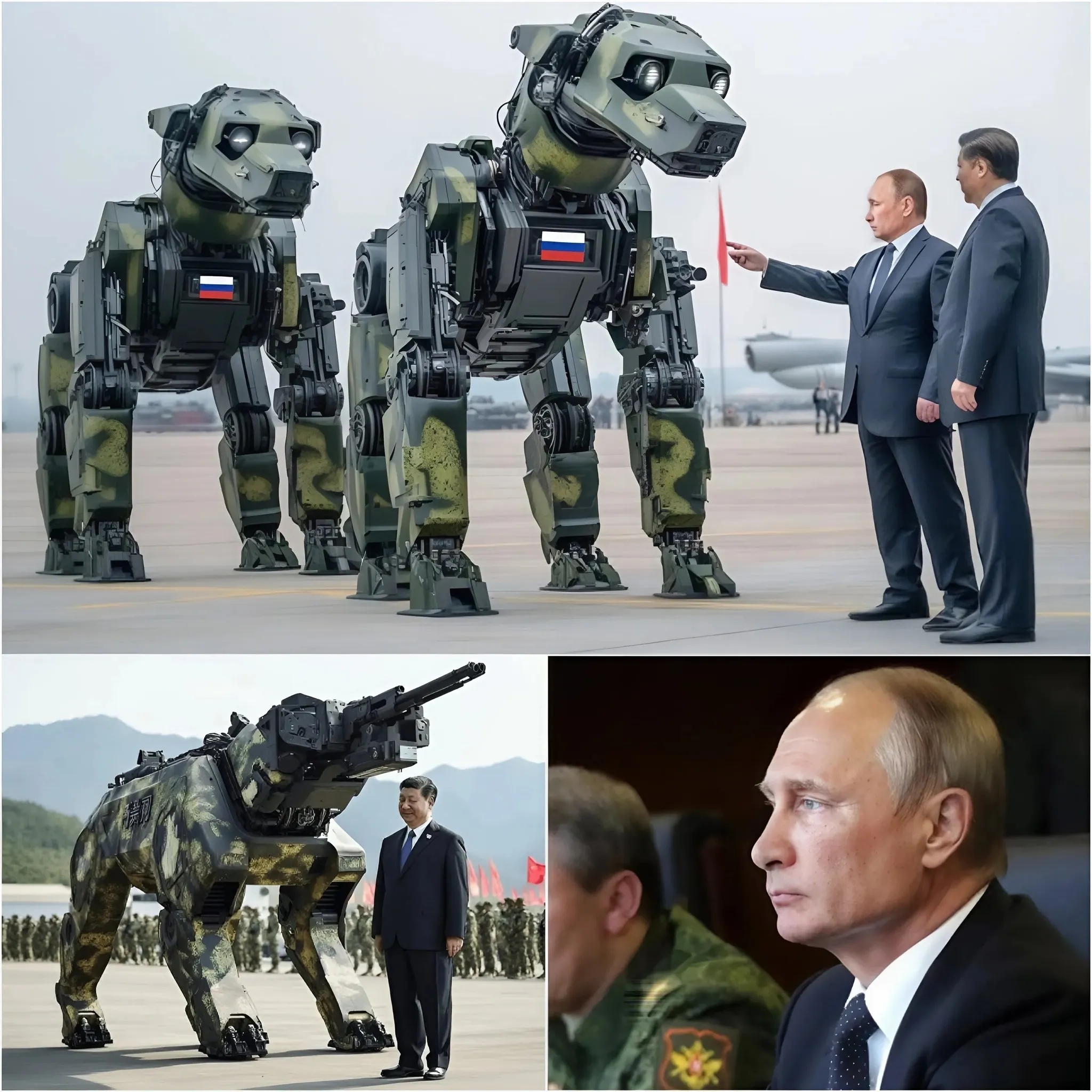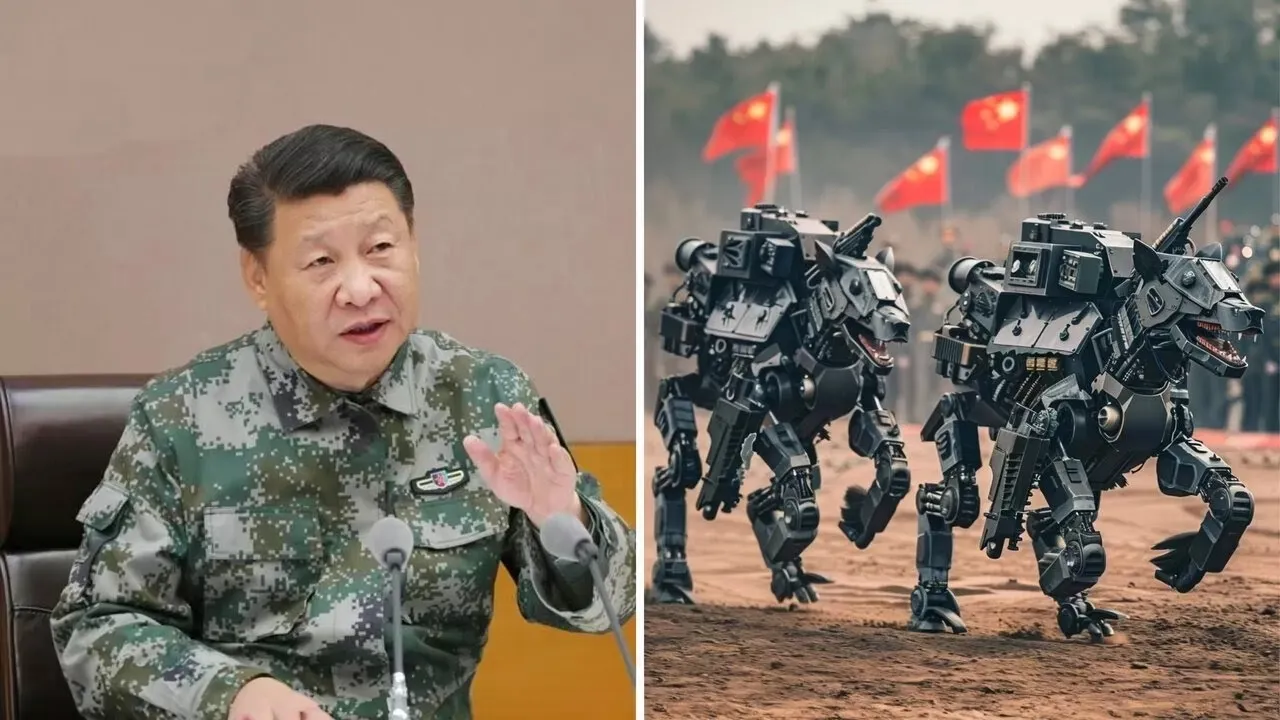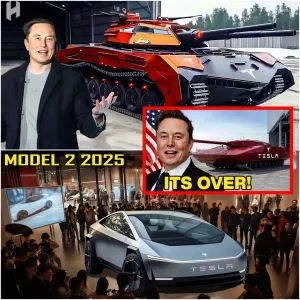In a bold move that has sent ripples through the global defense community, Russia has announced plans to build what it claims will be the most powerful robot army in the world, with a strategic partnership with China to test and refine its cutting-edge technology. This development, revealed on April 1, 2025, signals a new chapter in the escalating race for military supremacy, as both nations aim to dominate the military industry through artificial intelligence (AI) and autonomous systems. The question on everyone’s mind: who will emerge as the ultimate leader in this high-stakes technological showdown?

Russia’s ambitious project, spearheaded by the Ministry of Defense under the direction of Defense Minister Sergei Shoigu, involves the creation of a dedicated robotic military unit designed to integrate AI-driven systems across land, air, and sea. The initiative builds on years of research, with Russia already developing over two dozen platforms that incorporate AI and autonomy, including the Marker unmanned ground vehicle and the Uran-9 combat robot. These systems are designed to achieve what Russian military strategists call “information dominance on the battlefield,” using AI to process vast amounts of data, protect their forces, and disrupt adversaries. A key component of this strategy is the collaboration with China, which has emerged as a formidable player in AI and military technology.

The partnership between Russia and China, which has deepened since tensions with the United States began to rise in the early 2020s, is rooted in a mutual desire to counter Western military dominance. The two nations have already collaborated on projects like an early warning missile system, and their joint military exercises have grown in frequency and scale. Now, they are pooling their expertise to test Russia’s robotic army against China’s advanced AI systems, such as the DeepSeek AI model and autonomous drones like the Blowfish A2. This collaboration is not just about technology sharing—it’s a strategic move to challenge the United States and its allies, who have long held the upper hand in military innovation.

China’s role in this partnership cannot be understated. With an economy boasting a purchasing power parity of $31.2 trillion—surpassing the U.S.’s $24.7 trillion—China has invested heavily in AI, aiming to become the world leader by 2030. The People’s Liberation Army (PLA) spends over $1.6 billion annually on AI-enabled systems, and its military-civil fusion strategy has allowed it to harness commercial innovations for defense purposes. This has resulted in advancements like the Norinco Cavalry unmanned ground vehicle and plans for AI-powered nuclear submarines under the 912 Project. By testing Russia’s robotic army, China hopes to refine its own systems, potentially creating a combined force that could dominate future battlefields.
The implications of this partnership are profound. Both nations are developing systems that could operate with minimal human intervention, raising ethical concerns about the role of AI in warfare. While Russian leaders, like their American counterparts, insist that humans will remain in control of lethal decisions, the trend toward greater autonomy is undeniable. President Vladimir Putin has famously stated that the country that masters AI will “rule the world,” a sentiment echoed by Chinese President Xi Jinping’s push for AI dominance. The collaboration between Russia and China could accelerate this shift, potentially leading to a new era of warfare where autonomous robots play a central role.

However, the road to dominance is fraught with challenges. Russia’s robotic systems, such as the Uran-9, have faced technical issues, including problems with signal transmission through natural barriers and vulnerability to electronic warfare. Budget constraints also limit Russia’s ability to scale its ambitions, especially amidst Western sanctions following the Ukraine conflict. China, while financially stronger, faces its own hurdles, including international pressure over its use of AI for surveillance and concerns about the reliability of its autonomous systems in real combat scenarios. Meanwhile, the United States, with its $2.5 billion annual investment in AI and projects like the Joint All-Domain Command & Control (JADC2), remains a formidable competitor, though it struggles with bureaucratic inefficiencies.
As Russia and China test their technologies, the world watches with bated breath. Will this partnership usher in a new era of military dominance, or will the United States and its allies rise to the challenge? The race for the military industry’s future is on, and the outcome could reshape global power dynamics for decades to come.





